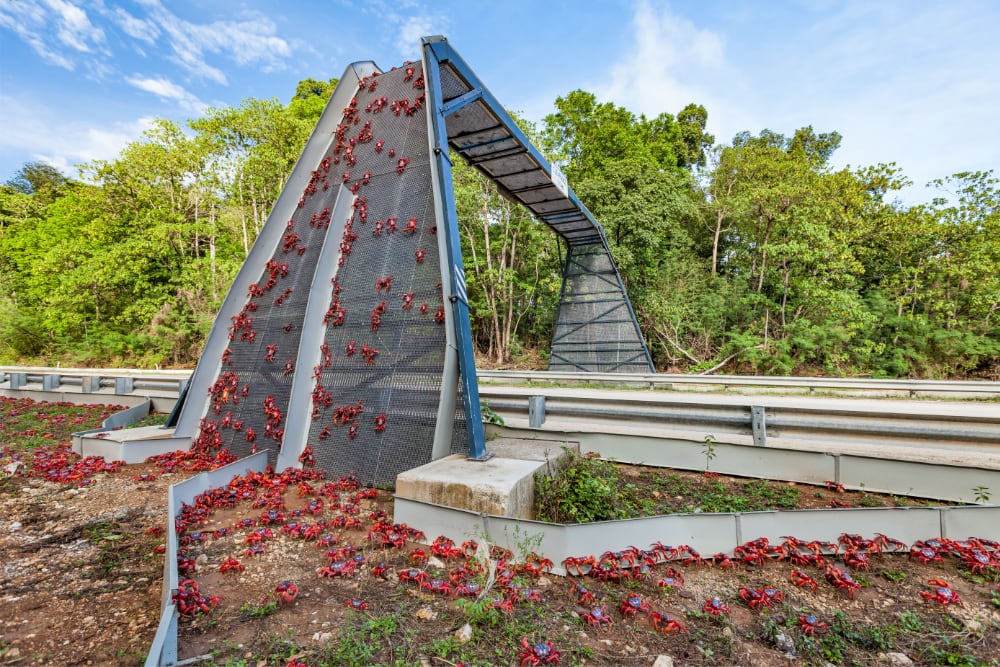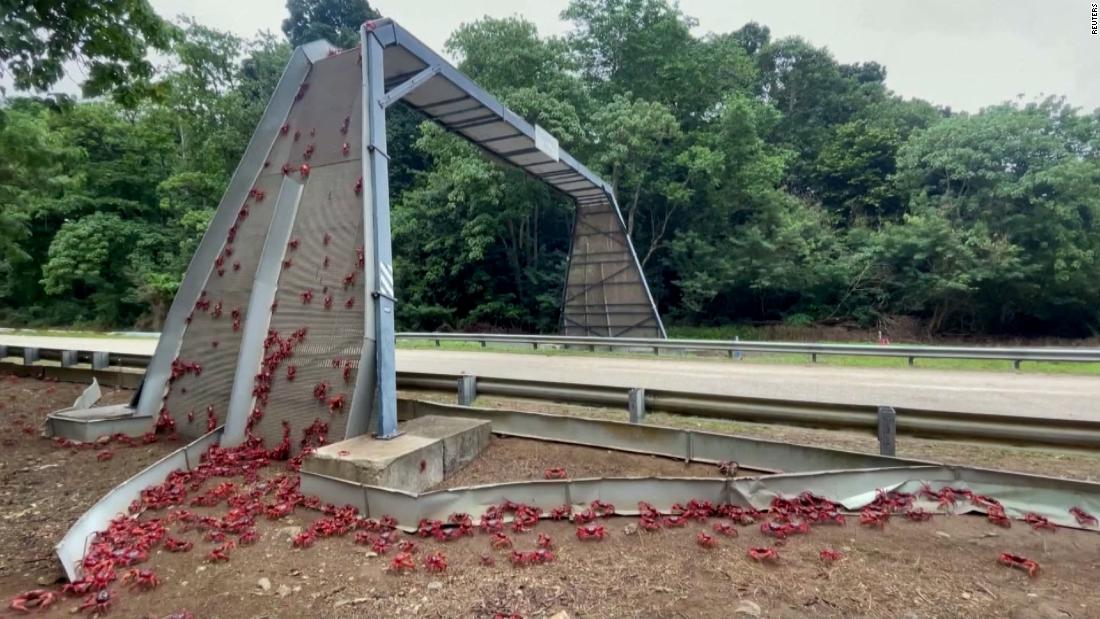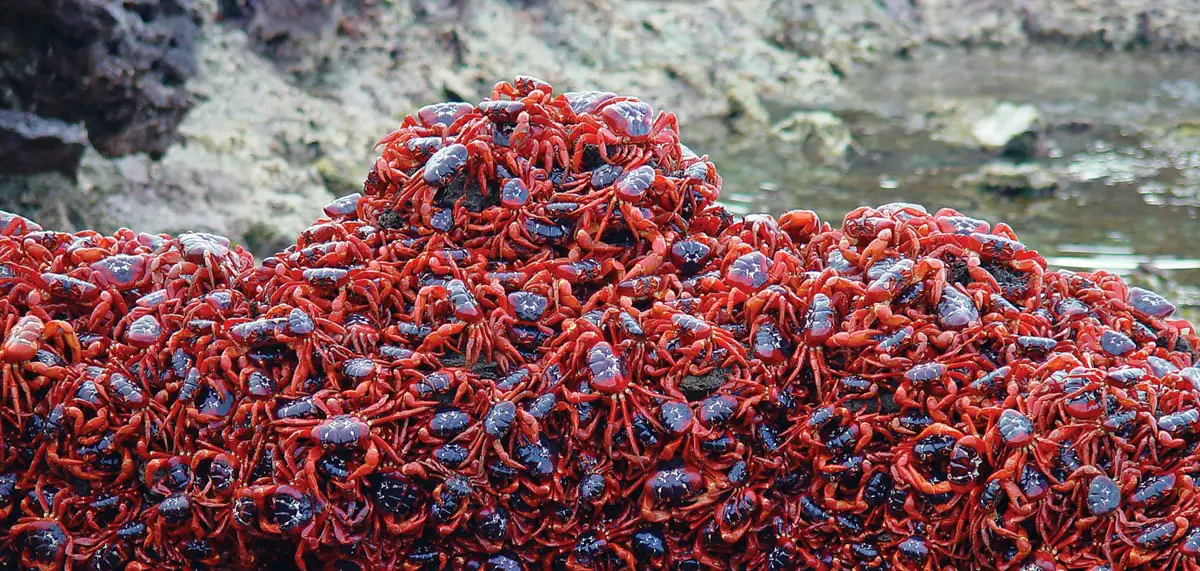Christmas Island Red Crab Bridge: A Spectacular Natural Phenomenon in 2024
Related Articles: Christmas Island Red Crab Bridge: A Spectacular Natural Phenomenon in 2024
- Christmas Images Portrait 2024: Capture The Magic And Joy
- Christmas Images Funny 2024: Spread The Holiday Cheer With A Touch Of Humor
- Christmas Images Good Morning 2024: Spread The Joy And Warmth
- Christmas Images Transparent 2024: A Comprehensive Guide To Festive Visuals
- Christmas In July 2024: A Mid-Summer Celebration
Introduction
With great pleasure, we will explore the intriguing topic related to Christmas Island Red Crab Bridge: A Spectacular Natural Phenomenon in 2024. Let’s weave interesting information and offer fresh perspectives to the readers.
Table of Content
Video about Christmas Island Red Crab Bridge: A Spectacular Natural Phenomenon in 2024
Christmas Island Red Crab Bridge: A Spectacular Natural Phenomenon in 2024

Introduction
Every year, during the wet season, a remarkable natural spectacle unfolds on the remote Christmas Island, an Australian territory located in the Indian Ocean. Millions of crimson-red crabs embark on an epic migration to the coast to breed, creating a vibrant tapestry that has become known as the Christmas Island Red Crab Bridge. This captivating event attracts nature enthusiasts and photographers from around the world, eager to witness this extraordinary display. In 2024, the Red Crab Bridge is expected to occur from late October to mid-December, offering a once-in-a-lifetime opportunity to experience this awe-inspiring phenomenon.
The Unique Ecosystem of Christmas Island
Christmas Island is a pristine haven for diverse flora and fauna, including the endemic Christmas Island red crab (Gecarcoidea natalis). These crabs are unique in their behavior, physiology, and ecology. They are the only known land-living crabs that undertake such a mass migration to the coast for breeding purposes. The island’s rugged topography, abundant rainfall, and dense vegetation create an ideal habitat for these remarkable creatures.
The Annual Migration
The migration of the red crabs is triggered by the onset of the wet season, typically around October or November. As the first heavy rains drench the island, the crabs emerge from their burrows and begin their arduous journey towards the coast. They travel in vast numbers, forming a continuous stream that can stretch for kilometers. The crabs navigate by moonlight and starlight, using the horizon as a guide.
The migration route varies depending on the location of the crabs’ burrows and the prevailing weather conditions. However, certain areas, such as Ethel Beach and Flying Fish Cove, are known to be popular crossing points. The crabs often encounter obstacles along the way, such as roads and buildings, which can disrupt their progress. To mitigate this, the Christmas Island community and park rangers implement measures to ensure the safe passage of the crabs.
The Breeding Process
Once the crabs reach the coast, they congregate in shallow waters near the shore. The males engage in elaborate courtship rituals, waving their large claws and making rattling noises to attract females. After mating, the females release their eggs into the water, where they are fertilized by the males. The eggs hatch into planktonic larvae that drift with the ocean currents for several months before returning to the island as juvenile crabs.
The Importance of the Red Crab Bridge
The Christmas Island Red Crab Bridge is not only a captivating natural spectacle but also an ecologically significant event. The mass migration plays a crucial role in the island’s ecosystem. The crabs disperse nutrients from the coast to the inland areas, fertilizing the soil and supporting the growth of vegetation. Their burrowing activities aerate the soil and improve water infiltration, benefiting the entire ecosystem.
Furthermore, the Red Crab Bridge is a valuable tourist attraction, generating revenue for the local economy and raising awareness about the unique biodiversity of Christmas Island. It is an opportunity for visitors to witness a truly extraordinary phenomenon and learn about the importance of conservation.
Conservation and Management
The Christmas Island Red Crab Bridge is a vulnerable natural phenomenon that requires careful conservation and management. The Christmas Island National Park Authority implements various measures to protect the crabs and their habitat, including:
- Road closures and crab crossings to ensure the safe passage of crabs during the migration
- Monitoring and research to track crab populations and identify potential threats
- Public education campaigns to raise awareness about the importance of the Red Crab Bridge
- Invasive species management to prevent the introduction of predators or diseases that could harm the crabs
Planning a Visit to the Red Crab Bridge in 2024
If you are planning to witness the Christmas Island Red Crab Bridge in 2024, it is essential to book your accommodation and flights well in advance, as the island is a popular tourist destination during this time. The best way to experience the migration is to join a guided tour led by local experts who can provide insights into the behavior and ecology of the crabs.
When visiting the Red Crab Bridge, it is crucial to follow the guidelines and regulations set by the park authorities. Stay on designated paths, avoid disturbing the crabs, and do not litter. Remember that the crabs are vulnerable during this time, and their well-being should be prioritized.
Conclusion
The Christmas Island Red Crab Bridge is a remarkable natural phenomenon that showcases the wonders of the natural world. In 2024, this spectacular event is expected to occur from late October to mid-December, offering an unforgettable opportunity to witness the mass migration of millions of crimson-red crabs. By embracing conservation and management efforts, we can ensure that this extraordinary spectacle continues to amaze future generations.






Closure
Thus, we hope this article has provided valuable insights into Christmas Island Red Crab Bridge: A Spectacular Natural Phenomenon in 2024. We thank you for taking the time to read this article. See you in our next article!
